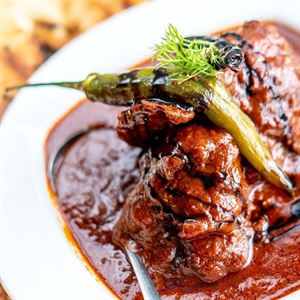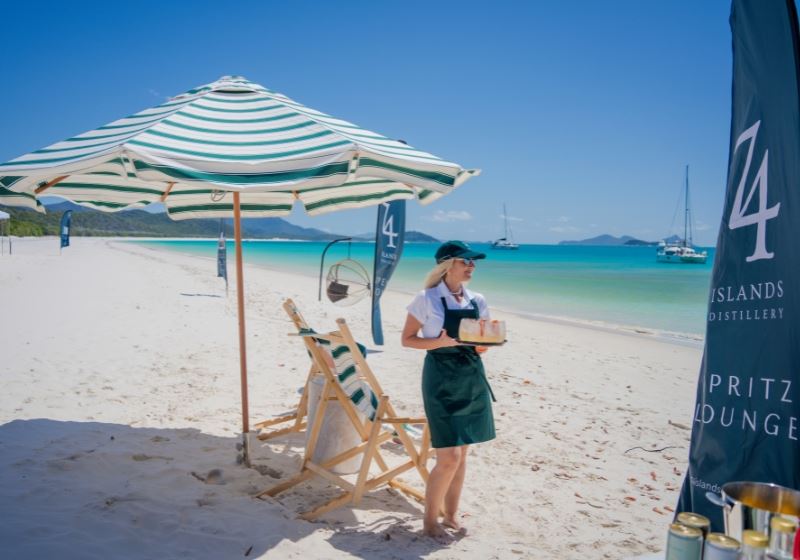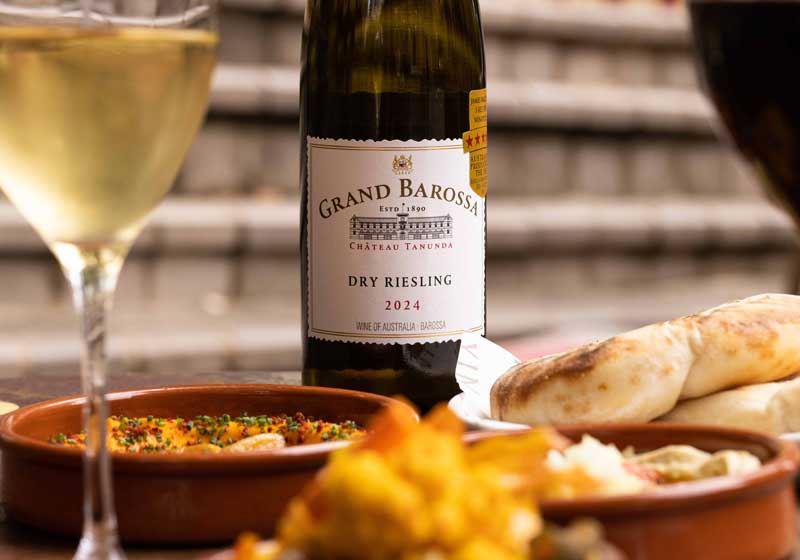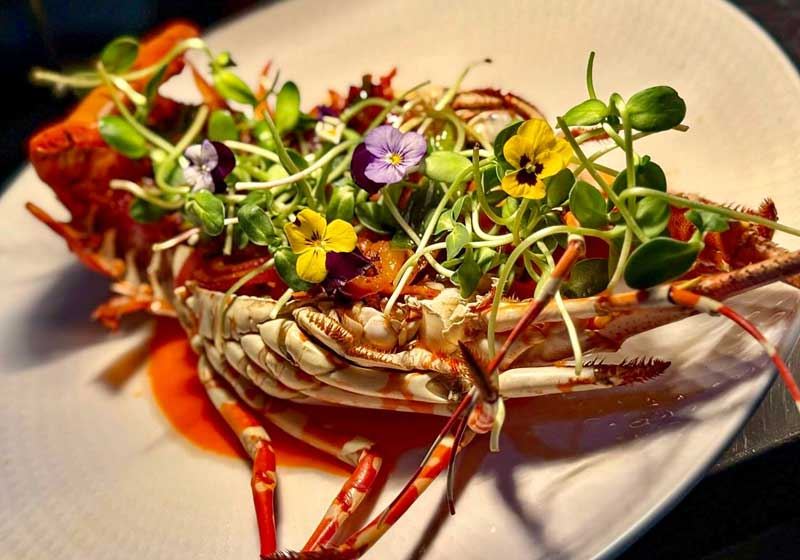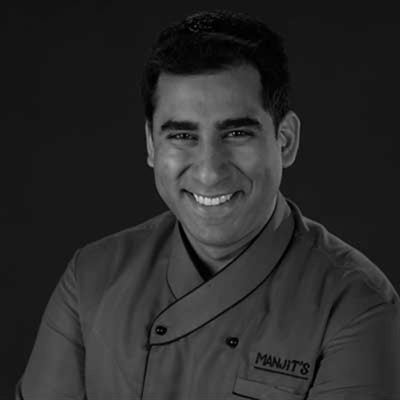
Born:
Sydney, NSW
History:
I grew up with the scent of spices in the air and a legacy that was impossible to ignore. My family - the Gujrals - have been at the centre of Sydney’s Indian hospitality scene for decades.
From a young age, while other kids were racing down to the telly for Saturday morning cartoons, I was racing down to the kitchen, mesmerised by the way my grandmother would dry-roast spices, the way she'd balance heat with aromatics and how effortlessly she'd coax depth out of simple ingredients.
That’s where it all began - on the floor of our family kitchen, watching, tasting, learning.
Formally, I didn’t train in Paris or under some Celebrity Chef. My training came from generations of family tradition, sharpened by curiosity, experimentation and an unrelenting desire to evolve what Indian food can be.
I took the reins at our flagship fine dining restaurant, determined not just to preserve legacy, but to redefine it.
For me, food is memory, but also movement. It’s about holding onto heritage with one hand and reaching forward with the other. I started crafting dishes that blended traditional Indian ingredients and techniques with contemporary Australian sensibilities - duck confit infused with garam masala, smoked eggplant with tempered mustard seeds, or curry-leaf beurre blanc over line-caught fish.
It's Indian, yes - but it's Indian through my eyes, my story and my palate, which has been shaped as much by family meals as by Australia’s incredible food culture.
Every dish I put out is a risk. Any time you create something new, you’re putting your heart and soul on the line, but I’m driven by a need to surprise, to delight and to push the envelope - even if it means fighting for every change.
I want people to walk in expecting butter chicken and walk out talking about the smoked quail with saffron labneh.
This isn’t just a restaurant to me. It’s my canvas, my journal, my love letter to two cultures I deeply belong to - Indian and Australian. I may be the Chef, but this kitchen is my rebellion, my sanctuary and my story - plated, garnished and served.
Have you always wanted to be a Chef?
Not at all - I didn’t grow up dreaming of being a Chef. In fact, for a long time, I resisted it. When you're born into a family like mine, where food is not just a livelihood but a legacy, there’s this pressure (spoken or not) that you’re expected to continue it. I didn’t want to just fall into that because it was convenient or expected.
Something shifted over time. I think it started with those early mornings in the kitchen with my grandmother. I’d watch her roast spices with such precision, such instinct. It was never just cooking - it was storytelling. Somewhere along the way, I realised I wanted to tell my own story too.
Still, even when I entered the family restaurant, I didn’t immediately identify as ‘a Chef’. I was just a guy trying to modernise a menu, trying to balance my love for bold, creative food with the respect I have for traditional Indian cuisine.
As I spent more and more time behind the pass, testing dishes, refining ideas, obsessing over flavour and presentation - I found myself not just in love with food, but in love with the process. The discipline. The creativity. The chaos. The craft.
I didn’t choose this path in the typical sense - it chose me slowly, over years. It crept up on me between burnt experiments and butter chicken disasters. Between the frustration of trying to modernise a menu steeped in tradition and the quiet thrill of seeing a guest light up over a dish they didn’t expect to love.
So no, I didn’t always want to be a Chef. Now that I am, there’s nothing else I’d rather be. This isn’t just a career - it’s personal. It’s emotional. It’s my rebellion and my tribute all in one.
How would you define your style?
My style is bold, progressive Indian cuisine with an Australian heartbeat.
At its core, it’s about respecting the traditions I was raised with - the deep aromatics, the layering of spices, the slow cooking techniques passed down through generations - but reinterpreting them in a way that speaks to a modern, diverse audience.
What is your feature flavour these days?
Right now, I’m obsessed with black cardamom (not to be confused with its green counterpart). It’s smoky, earthy, almost leathery in depth, and when used right, it completely transforms a dish.
Obsessive-compulsive about?
Plating. Without question.
It drives my team mad sometimes, but I’m obsessive-compulsive about how a dish lands in front of a guest. It’s not just about looking pretty; it’s about intention. Every smear, every sprinkle, every micro-herb has to have a purpose. If it’s not adding to the story, it doesn’t belong on the plate.
Your greatest culinary influence:
My greatest culinary influence is my grandmother. She didn’t have Michelin stars or fancy titles, but she had this instinctive understanding of flavour that still guides everything I do.
She taught me that cooking isn’t just about recipes - it’s about feel, about listening to the sizzle of spices hitting hot ghee. About knowing when something’s ‘done’ not by time, but by smell. About patience. The kind that comes from hand-grinding masalas or slow-roasting something for hours until it’s just right.
What do you love about this business?
What I love most about this business is that it’s alive. Every single day, it breathes, shifts and demands something new from you. It keeps you on your toes, whether you're cooking for two or two hundred.
An ingredient you can’t live without?
If I had to pick just one ingredient to carry with me through every phase of my career (and probably life) it’s cumin. It’s the backbone of so much Indian cooking, but it’s also wildly versatile and completely underappreciated outside our cuisine.
Most ‘eyebrow-raising’ menu item?
It’s a family business and we had a lot of ‘debate’ over my duck curry.
It turns heads every time; partly because duck isn’t something people associate with Indian food and partly because traditionalists don’t expect to see it nestled next to ingredients like hing, mustard seed, and jaggery glaze.
Signature dish:
Butter chicken. Not just because it’s iconic, not because it’s popular, but because it’s personal. There’s history in that bowl. A Gujral was the original creator of butter chicken back in Delhi and the dish was born out of necessity, using leftover tandoori chicken, a tin of tomato soup, cream and a bit of ingenuity.
That humble beginning sparked a global phenomenon, and it’s been running through my family’s veins ever since.
What can diners expect when they eat at your restaurant and what makes the experience special?
When diners walk into Manjits Wharf, they’re not just booking a table; they’re stepping into a generational story, set against one of the most iconic backdrops in Sydney: Darling Harbour.
What makes the experience truly special is that it’s not just about the food; it’s about how it’s delivered. You’ve got a Chef-hatted Indian restaurant sitting on prime waterfront real estate, with panoramic views of the harbour.
What is your go-to meal at home when you don’t feel like cooking?
A banh mi. It’s quick, it’s punchy and it reflects the kind of multicultural Australia I grew up in. There’s something about that perfect balance of crunch, spice, freshness and umami that just does it for me.

